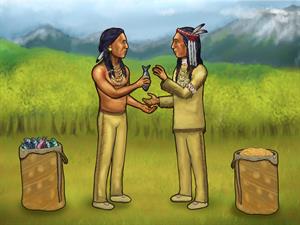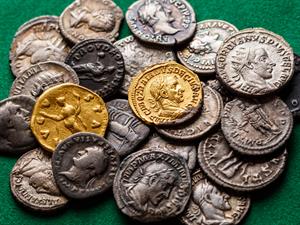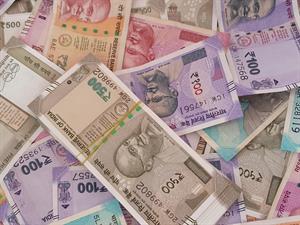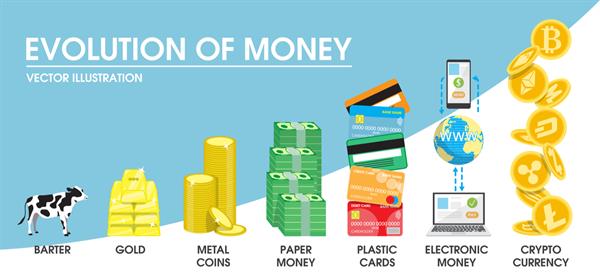
PUMPA - SMART LEARNING
எங்கள் ஆசிரியர்களுடன் 1-ஆன்-1 ஆலோசனை நேரத்தைப் பெறுங்கள். டாப்பர் ஆவதற்கு நாங்கள் பயிற்சி அளிப்போம்
Book Free DemoMoney has evolved through different stages according to time, place and circumstances.
Commodity Money
In the earliest period of human civilization, any commodity that was generally demanded and chosen by common consent was used as money. Goods like furs, skins, salt, rice, wheat, utensils, weapons etc., were commonly used as money. Such exchange of goods for goods was known as ‘Barter Exchange’.
In the earliest period of human civilization, any commodity that was generally demanded and chosen by common consent was used as money. Goods like furs, skins, salt, rice, wheat, utensils, weapons etc., were commonly used as money. Such exchange of goods for goods was known as ‘Barter Exchange’.

Commodity money
Metallic Money
With the progress of human civilization, commodity money changed into metallic money. Metals like gold, silver, copper were used to be easily handled, and their quantity can be easily determined. Thus, metallic money was the main form of money throughout the major portion of recorded history.
With the progress of human civilization, commodity money changed into metallic money. Metals like gold, silver, copper were used to be easily handled, and their quantity can be easily determined. Thus, metallic money was the main form of money throughout the major portion of recorded history.

Metallic money
History of Metallic Money
King Midas of Lydia innovated metal coin in the 8th century BC (BCE) by the ancient historian Herodotus. But gold coins were in use in India for many centuries than in Lydia.
The earliest issuers of coins in the world are the ancient Indians and Chinese and Lydians from the middle east. The first time Indian coins were minted in the 6th century BC (BCE) by the Mahajanpadas known as Puranas, Karshapanas or Panas.
The Mauryas came up with the Punch Marked Coins minting of silver, gold copper or lead . However, Indo-Greek Kushan kings introduced the Greek custom of engraving portraits on the coins. Turkish sultans of Delhi has replaced the royal designs of Indian kings with Islamic Calligraphy by the 12th century AD (CE). The currency was made up of gold, silver and copper, known as Tanka and the lower valued coin known as Jittals.
The Mughal Empire from 1526 AD consolidated the monetary system for the entire empire. In this era evolution of the rupee occurred with Sher Shah Suri defeated Humayun and issued a silver coin of 178 gms known as Rupiya. During the whole Mughal period, the silver coin remained in use.
During the British East India company i.e. 1600, the Mughal currency remained popular, but in 1717 AD, Farrukhsiyar the Mughal emperor permitted the Britishers to coin Mughal money at the Bombay mint. The British gold coins were termed Carolina, the silver coins as Angelina, the copper coins as Cupperoon and the tin coins as Tinny.
Paper Money:
The gold and silver coins were found inconvenient as well as dangerous to carry from place to place.
So, the invention of paper money marked a crucial stage in the development of money. The development of paper money started based on the storage of gold, and the goldsmiths issued the receipts for these storages. These receipts of goldsmiths were a substitute for money and became paper money.
Paper money is regulated and controlled by the Central bank of the country (Reserve Bank of India). At present, a huge part of money consists mainly of currency notes or paper money issued by the central bank.

Paper money
Credit Money or Bank Money
The emergence of credit money took place almost side by side with that of paper money. People keep a part of their cash as deposits with banks, which they can withdraw at their convenience through cheques. The cheque (known as credit money or bank money) is not money, but it performs the same functions as money.
Near Money
Near money refers to highly liquid assets that can rapidly be converted into cash, such as short-term money market instruments and bank deposits. The final stage in the evolution of money has been the use of bills of exchange, treasury bills, bonds, debentures, savings certificate etc.
Near money refers to highly liquid assets that can rapidly be converted into cash, such as short-term money market instruments and bank deposits. The final stage in the evolution of money has been the use of bills of exchange, treasury bills, bonds, debentures, savings certificate etc.

Evolution of money